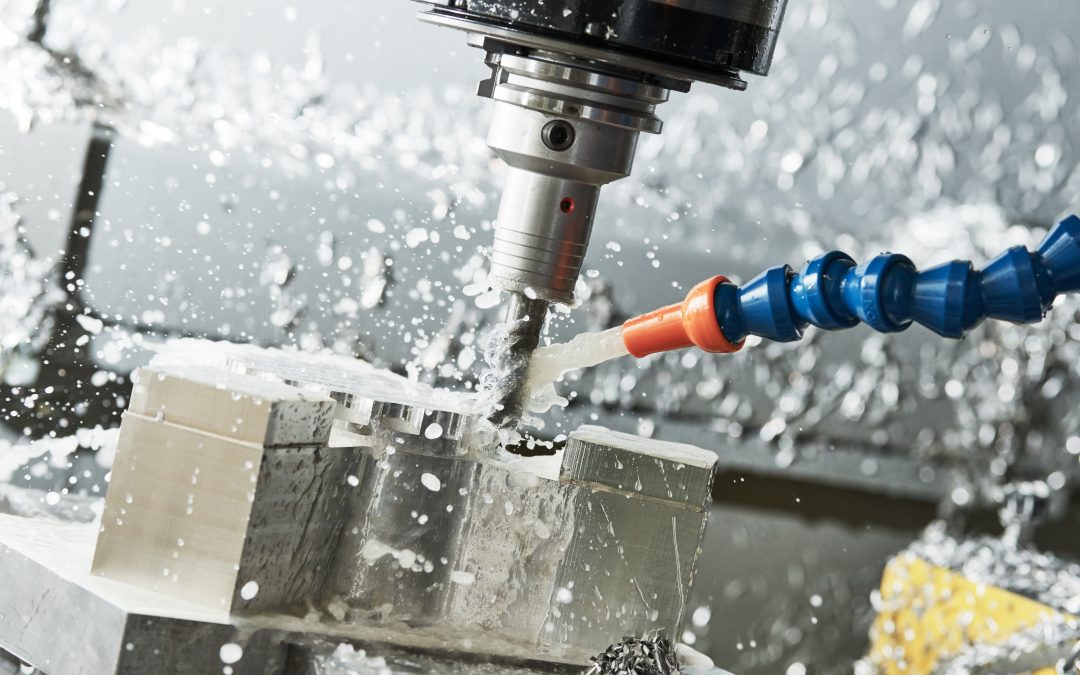When metalworking tools start to wear down, the end product may not meet tolerance specifications, and the machine itself may require repairs due to excessive spindle vibration. The right cutting fluid can increase tool life by 214% and improve the performance of metalworking machines by reducing friction, cooling and clearing the chip zone, curtailing corrosion, and cutting down on residue formation. In optimal conditions, using the right cutting fluid can even reduce tool wear at higher cutting speeds.
However, not all cutting fluids are created equal. Tool and equipment manufacturers can choose from soluble oils that are gentler on the skin, synthetic coolants that have no oil and are ideal for aerospace, and semisynthetic fluids that contain both oil and synthetic materials and are easier to maintain. You also want to consider the metals you use, the machining operations (turning, forming, drilling, etc.) being completed, the types of machines in use, any tooling specifics, your plant processes, and any chemical restrictions you have.
When you take all these factors into account, it becomes even more important that you use the right fluid for your machines. Here are five ways that the proper cutting fluid can extend the life of and boost the performance of your machines.
Reduces metal-to-metal contact.
Fluid at the right viscosity will penetrate the tool-to-workpiece point of contact. This, in turn, creates a cushion between the tool and the workpiece, reducing the contact between the two. Tool wear is reduced, and the surface quality of the finished workpiece is smoother.
Removes chips from the chip zone.
During the metalworking process, chips are a byproduct of cutting. At high cutting speeds, there is a high chip removal rate (the amount of material removed from the parts). This raises the temperature of the cutting zone, which can cause unnecessary wear to tools. The right cutting fluid flushes the chips from the chip zone and cools the area, which protects the tools from further wear. In low flow high-velocity conditions, the cutting fluid flows into the chip zone, which has the highest temperature during cutting. This quickly cools the chip zone and slows tool wear as well.
Protects machinery from corrosion.
Choosing a cutting fluid with the right pH can help prevent corrosion of ferrous metals. These include mild steel, carbon steel, stainless steel, cast iron, and wrought iron. A fluid with a pH closer to 8.8-9.6 is less likely to cause corrosion on these metals. Additionally, if the fluid is either very alkaline or very acidic, it could cause maintenance issues for your machinery where different materials are used. Extreme pH can also cause elastomers to lose flexibility.
Decreases residue formation.
All cutting fluids will create some form of residue, the most desirable being liquid residue. The wrong type of fluid will create a hard or gummy residue, which can keep limit switches from functioning properly or cause “slip-stick” issues. The longer a hard residue is left, the harder it is to remove. Tool and equipment manufacturers need to choose a fluid that produces a residue that does not hinder their machinery.
Cuts energy costs.
Using the right cutting fluid can also contribute to reducing your energy costs by up to 73%. This is due to the increased tool life that comes from the cushion and corrosion protection provided by the coolant. The tools also wear more consistently from flute to flute, a more predictable pattern that keeps the tool “in cut” longer. Built-in sensors will not be tripped because the tool is still performing well. As a result, parts don’t need to be thrown away mid-cut, nor do tools need replacing in the middle of a job.
Being able to improve tool performance is key to running an efficient, cost-effective operation. The right cooling fluid reduces metal-to-metal contact, flushes out chips, lowers the likelihood of corrosion, prevents the wrong kind of residue from forming, and even cuts your energy costs. Keep in mind the types of tools you use, the metals you work with, and your plant processes as you evaluate fluids, and you’ll be able to choose the right one for your applications. For assistance choosing the right cutting fluid for your machines, email us at [email protected] or call +1 800-537-3365.

